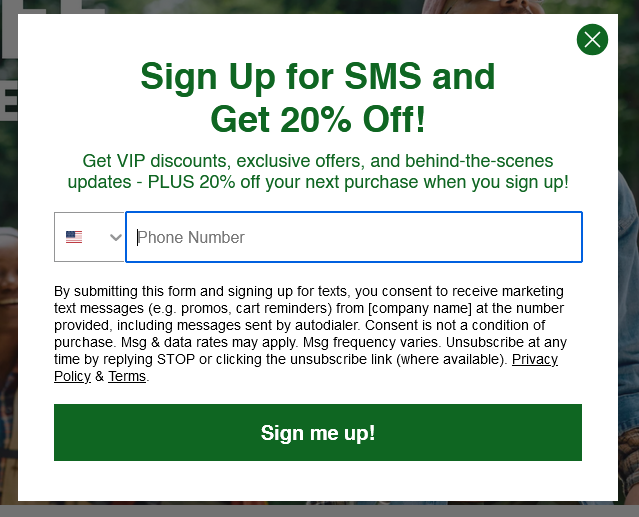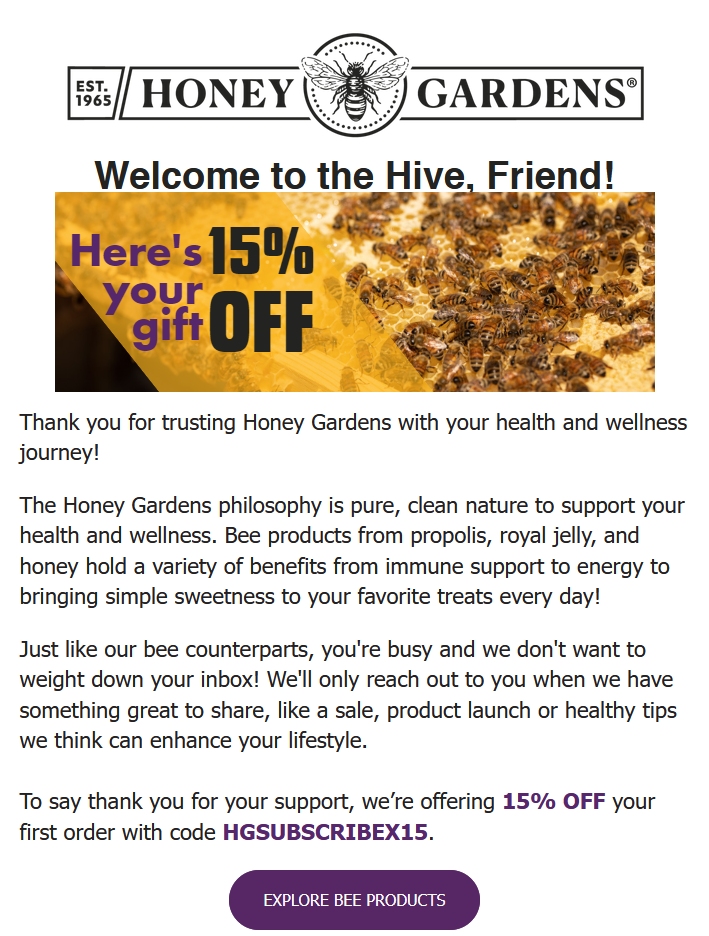How to Create an Email List:
Why It’s Essential for Your Business
If you’re wondering how to create an email list and why it matters, here’s the truth: without one, you’re leaving money on the table.
Social media and ads may get you visibility, but they’re unpredictable. Algorithms change, and ad costs keep rising. Your email list, on the other hand, is a long-term asset you control—a direct line to your audience with no middleman. It helps you stay connected, build loyalty, and drive consistent sales.
In this guide, we’ll break down what makes an email list so essential and give you an overview of the steps to get started. Ready to grow your business? Let’s dive in.
What You Need to Get Started
The Basics You Need to Build an Email List
Building an email list is like taking the BCC (Blind Carbon Copy) field in your email to the next level—but with far more refinement, privacy, and marketing power. While the BCC field lets you send the same email to multiple people without sharing their contact details, email marketing platforms like Klaviyo or Mailchimp do this on steroids. They’re designed specifically to:
- Protect privacy and security: Your recipients’ information is kept safe, organized, and professional, ensuring compliance with laws like GDPR and CAN-SPAM.
- Automate campaigns: Unlike BCC emails, these tools allow you to schedule and personalize messages for specific groups, saving you time while increasing effectiveness.
- Track performance: Platforms give you detailed analytics—open rates, click-throughs, predictive analytics and sales—so you know exactly how your emails are performing.
To get started, here’s what you’ll need:
- An Email Platform: Choose a tool like Klaviyo or Mailchimp to manage your list, send campaigns, and automate workflows.
- A Lead Magnet: Offer something valuable, like a discount or guide, to encourage people to join your list. While this is optional it will greatly increase conversions if you give prospects something in return for their email.
- A Signup Form: Make it easy for people to opt in, with forms on your website, popups, social media, or dedicated landing pages.
With these tools, you’ll turn a simple idea—sending emails—into a scalable system that grows your business. It’s BCC, but better, smarter, and built for results.
Define Your Audience: The Key to Creating the Perfect Lead Magnet
Before you dive into creating a lead magnet or designing that flashy popup, you need to know who you’re building your email list for. Understanding your audience is the foundation of every great email strategy—and it’s what makes the difference between a lead magnet that converts and one that gets ignored.
Ask yourself these questions:
- Who are your ideal customers? Are they small business owners, busy parents, or tech-savvy professionals?
- What problems are they trying to solve? Knowing their pain points helps you craft a lead magnet or popup that speaks directly to their needs.
- What value are they looking for? Discounts, exclusive tips, free resources—figure out what makes them say, “I need this.”
When you know your audience, you’ll know exactly what to offer to get them to sign up. Whether it’s a free guide, a discount, or a helpful resource, this step ensures your lead magnet or popup grabs attention and delivers results. Nail this, and you’ll have a solid start to building an email list that works for your business.
Create a Signup Form: Make It Easy for People to Join
Your signup form is the gateway to your email list. It’s the first step in turning curious visitors into loyal subscribers, so keep it simple, clear, and irresistible.
Where Should Your Signup Form Go?
To maximize signups, your form should be easy to find. Place it in strategic locations like:
- Your Website: Add it to your homepage, blog posts, or as a footer banner.
- Pop-Ups: Use time-delayed or exit-intent pop-ups to grab attention at the right moment. Click Here To Learn More About Creating High Converting Popups
- Landing Pages: Create dedicated signup pages to drive traffic from ads or social media.
- Social Media: Add a link to your bio or share your signup page directly with followers.
 Example of an embedded signup form
Example of an embedded signup form Example of a typical footer signup for a Shopify Store
Example of a typical footer signup for a Shopify Store Example of an SMS Popup offering 20% Off (Note: SMS offers are usually better than email since SMS can be harder to get but is more personal)
Example of an SMS Popup offering 20% Off (Note: SMS offers are usually better than email since SMS can be harder to get but is more personal)What Makes a Great Signup Form?
A strong signup form does more than just collect emails—it’s an invitation to your audience that offers something of value in return. For example:
- Headline: "Get 10% Off Your First Order—Join Now!"
- Call-to-Action Button: "Send Me the Discount!"
Offering a discount is especially effective because it taps into the psychological trigger of reciprocity: when you give something first, people feel compelled to give back. That could mean signing up, making a purchase, or becoming a loyal customer.
But it’s not just about the initial discount. The lifetime value of someone who joins your email list is much higher than someone who doesn’t. Subscribers are more likely to buy again, respond to future offers, and recommend your business. That small upfront incentive? It’s an investment in building long-term relationships and driving consistent sales.
Keep it simple. Only ask for what’s essential, like name and email, to reduce friction and encourage signups. Pair your offer with urgency, like “Today Only: Get 10% Off When You Join!”, to create a sense of immediacy and boost conversions.
Your signup form isn’t just another feature—it’s the front door to your email list and the start of a relationship that can grow your business for years to come.
 Example of a lead magnet in the form of a popup
Example of a lead magnet in the form of a popupStart Nurturing Your Subscribers Immediately
First Impressions Matter.
The moment someone joins your email list, they’re paying attention. This is your chance to make a lasting first impression—and if you miss it, you risk losing their interest before you even get started.
A welcome email (or better yet, a welcome series) sets the tone for your relationship with subscribers. It’s your opportunity to show them who you are, what you’re about, and why staying on your list will benefit them.
Here’s what makes a great welcome email:
- A Warm Introduction to Your Brand:
Let them know who you are, what your business is about, and how you’ll bring value to their inbox. Keep it conversational and approachable. - Deliver on Your Promise:
If they signed up for a discount, free resource, or lead magnet, make sure it’s the first thing they see. Prove you’re trustworthy by delivering exactly what you promised—no delays, no friction. - Tease What’s to Come:
Build excitement by letting them know what they can expect from your future emails. Highlight the value you’ll bring, whether it’s tips, exclusive offers, or behind-the-scenes content.
For example:
- “Welcome to [Your Brand]! Here’s your [Lead Magnet/Discount]. Stay tuned for insider tips, special offers, and strategies you won’t find anywhere else.”
Pro Tip:
Use automations to send your welcome email (or series) immediately after signup. This ensures no time is wasted, and every subscriber feels appreciated right from the start.
Click Here To Learn More About Email Marketing Flows
Your welcome email isn’t just an introduction—it’s your chance to turn a new subscriber into a loyal customer. Make it count.
 Example of a typical welcome email
Example of a typical welcome emailCommon Mistakes to Avoid
What NOT to Do When Building Your List
Building an email list can be one of the smartest moves for your business—but only if you do it right. Here are some common mistakes that can derail your efforts and what you should do instead:
- Buying Email Lists:
It might seem like a quick way to grow your list, but buying email addresses is a disaster waiting to happen. Not only is it unethical, but it also damages your email reputation. These people didn’t ask to hear from you, which means they’re more likely to mark your emails as spam—and that can tank your deliverability. Build your list the right way with opt-ins. You know how it feels to get unwanted email directly into your inbox. - Sending Generic Emails:
Nobody wants to read an email that feels like it was meant for “everyone.” Failing to personalize emails or provide relevant content is a surefire way to make your audience tune out. Use segmentation and tailor your messages to address specific needs or interests. - Ignoring Your List:
Building an email list is only half the battle. If you don’t follow up consistently, your subscribers will forget who you are—and when they finally hear from you, they’ll be more likely to hit “unsubscribe.” Stay active and keep your audience engaged with regular, valuable emails.
Pro Tip: Focus on quality over quantity. A smaller, engaged list is far more powerful than a massive list of disinterested subscribers.
Avoid these mistakes, and you’ll be well on your way to building a thriving, profitable email list that drives long-term results.
Why Your Email List Is Worth the Effort
Your email list isn’t just another marketing tool—it’s an asset that grows with your business. Unlike social media, where your reach depends on ever-changing algorithms, an email list gives you complete control. You decide when to communicate, how to communicate, and who gets your message.
Here’s why it’s so powerful:
- It Drives Consistent Sales: Your email list is filled with people who’ve already shown interest in your business. Whether it’s through product launches, exclusive offers, or helpful updates, email lets you tap into an engaged audience that’s ready to buy.
- It Builds Trust and Loyalty: By consistently showing up in your subscribers’ inboxes with value-driven content, you strengthen your relationship with them. Over time, that trust turns into repeat business and referrals.
- It’s a Long-Term Asset: Social media platforms can come and go, but your email list is yours forever. As your list grows, so does your ability to generate revenue on demand.
An email list is more than worth the effort—it’s your business’s secret weapon for sustainable growth.
Ready to Start Building Your Email List?
If you want to create an email marketing system that works while you sleep, I can help. My Done-for-You Email Marketing Services are designed to take the guesswork out of building and managing your list so you can focus on running your business.
Click here to learn more and get started.